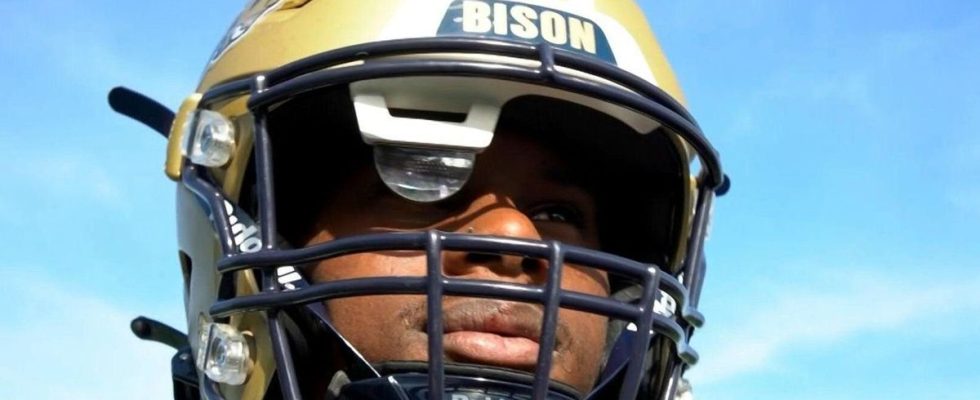Published on
Updated
Reading 3 min.
On the American football field at Gallaudet University in Washington, coach Chuck Goldstein holds in his hands a technological gem: a helmet with a transparent eyepiece so that his players, all deaf or hard of hearing, can see his instructions, transmitted via 5G.
In the United States, where this sport is king, professional teams have helmets with an audio system. In this way, a coach can transmit his instructions to certain players on the field before each sequence of play.
But for the Gallaudet varsity team, such a mode of communication is impossible.
The university, founded in 1864 in the heart of the federal capital of the United States, has more than 90% of students who are deaf or hard of hearing. The same goes for its American football team.
“We communicate in ASL“, American sign language, says coach Goldstein during an interview with AFP. “We communicate as quickly as any other team in the country. But the difference is that our players don’t hear the whistle“, he adds.
Result: the referees sometimes penalize Gallaudet for not stopping playing at the right time.
“It’s never truly a level playing field“, regrets Chuck Goldstein.
And as for the instructions given from the sidelines, “if our player doesn’t look at us, he won’t know what we’re saying to him“, explains the coach, specifying that it sometimes comes “to jump everywhere” to get a player’s attention.
Light signals
It was with these issues in mind that the university unveiled a new experimental headset developed by US telecoms giant AT&T in early October.
In external appearance, the helmet is not a priori different from those used by all American football players: a hard shell, a metal grille at the jaw level and the team logo on the sides.
The only visible difference is a transparent plastic eyecup hung in front of the player’s eye, like a viewfinder.
Using a tablet on the sidelines, the coach can instantly dictate his instructions to the players on the field. Light signals, in augmented reality, appear on the eyecup, in the form of lines, letters or numbers, referring to the team’s playing combinations.
Helmet “allows deaf and hard of hearing players to see instructions as quickly as their opponents can hear them“, explains Andrew Bennett, manager in AT&T’s 5G product division.
An emergency system also exists.
On the tablet, “I have a kind of red button, it’s like an exclamation point. If I need the quarterback’s attention, I press the button and the red flashes appear” on the tablet. “eyeball,” explains Chuck Goldstein.
According to Andrew Bennett, the idea for the headset germinated at AT&T when they saw the impossibility for deaf and hard of hearing American football players to use the in-headset audio systems of NFL teams, the professional American football league.
“Natural”
The development process for this new technology was done through a series of back and forths between the company and Gallaudet players.
“The first time I used the headset I didn’t totally like it because it was really big at the back“, says Brandon Washington, Gallaudet quarterback.
Andrew Bennett explains that, in effect, “one of the first versions had a large and heavy battery which was modified at the suggestion of players“.
This has been reduced and is now integrated inside the helmet.
Furthermore, “Choosing the right eyecup for the augmented reality component took time because the glass was inadequate. A plastic eyecup was chosen to ensure it would not shatter upon impact“, adds Andrew Bennett.
Although the helmet has undergone rigorous testing to be approved, the NCAA, the body governing university sports in the United States, has so far only authorized Gallaudet to use it for a single match, which took place at the beginning of October. .
“It was natural, fluid“, enthuses Chuck Goldstein.
The next step now is to campaign with the NCAA to have this authorization extended to the entire season.
A meeting between the university and the organization, which governs a multibillion-dollar annual industry, is planned.
But coach Goldstein is already looking toward the future.
“The possibilities are endless“, he assures, and “not just for deaf or hard of hearing gamers“.
“What if the NFL or other leagues adopted this technology?“, asks the coach.
